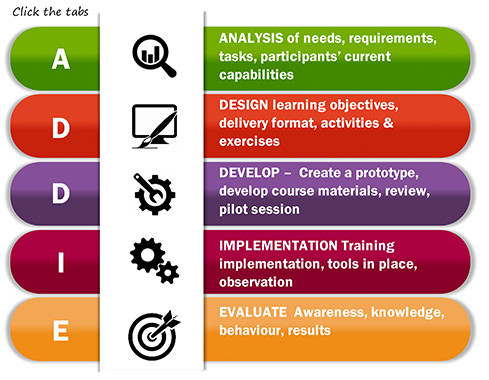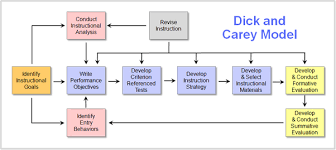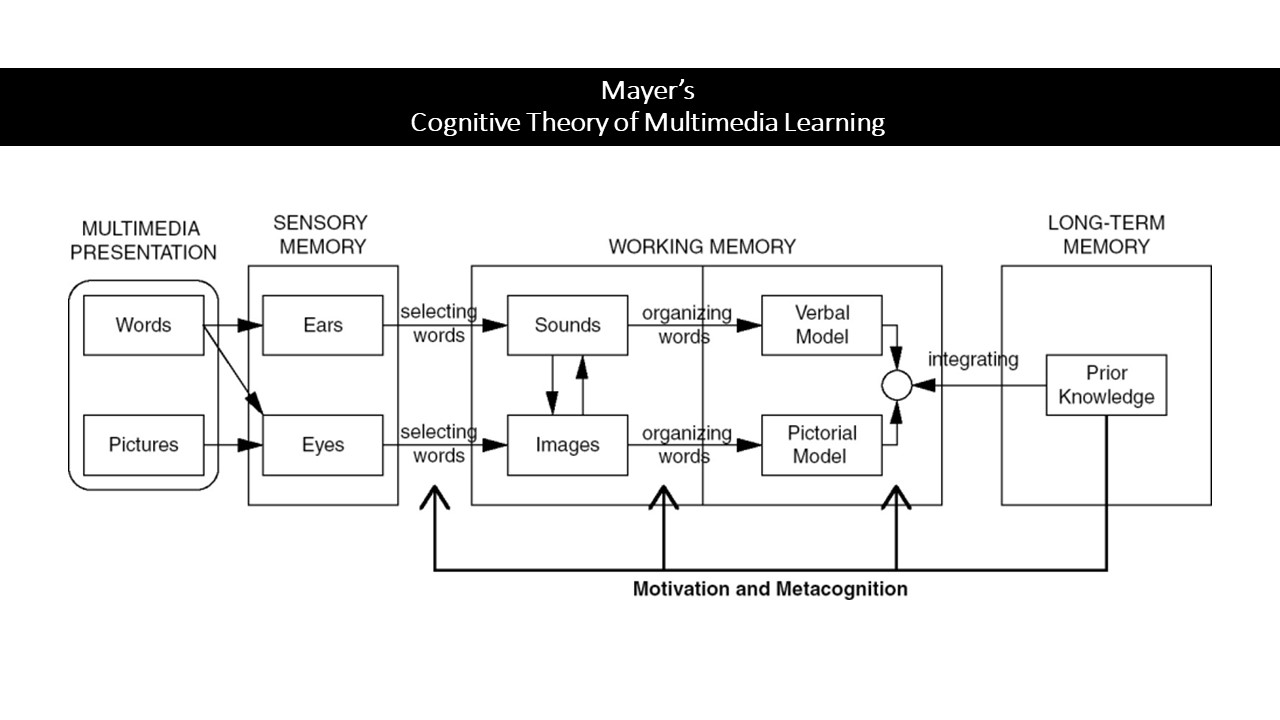Topic outline
- General
General
A continuing professional development program for medical, nursing, and allied health professionals, educators, and Instructional Designers and Educational Technologist.
Health professional education is a resource-intensive process that, with the current challenges of resource scarcity, requires innovative strategies to improve its effectiveness with the use of modern theories, technologies, and practices. Fundamental to learning in medicine, is a requirement of the learner for the acquisition of knowledge and skills and the development of attitudes that are conducive to the creation of a competent health professional who is able to practice competently and independently as a professional in the community -i.e. fit for purpose.
This course is specially designed for healthcare professionals and will provide the knowledge, skills, and competencies required for delivering effective teaching using instructional design and educational technology. Participants will actively understand and apply the instructional design process, from analysis through evaluation, and engage in authentic instructional design activities in their subject area to facilitate effective teaching and solve performance issues at the workplace.
- Please introduce yourselves here, and share your reasons for joining this program.
Challenges of the post graduate medical learners
A video lecture by Dr Vaikunthan Rajaratnam FRCS
Compiled by
Dr Vaikunthan Rajaratnam
Powerpoint lecture by Vaikunthan Rajaratnam
Updated presentation
test etrsxte
- redness
- Module 1 :Theories of Learning in Health Professional Education
Module 1 :Theories of Learning in Health Professional Education
Learning is defined as a process that brings together personal and environmental experiences and influences for acquiring, enriching or modifying one’s knowledge, skills, values, attitudes, behaviour and world views. Learning theories develop hypotheses that describe how this process takes place. The scientific study of learning started in earnest at the dawn of the 20th century. The major concepts and theories of learning include behaviourist theories, cognitive psychology, constructivism, social constructivism, experiential learning, multiple intelligence, and situated learning theory and community of practice.
A youtube video leacture
At the end of this session you should be able:-
- To describe the instructional design process
- Use the process to design a learning program
- To create a residency digital learning program
How to Design & Teach an Online Course Using a Backwards Design Approach
Video lecture that defines the role of cognition and learning to help you determine the most appropriate instructional strategies for your online learners.
web site explaining Honey and Mumford's original definitions .Activist, Theorist; Pragmatist and Reflector
edited by Terry Anderson
Printed and bound in Canada by AGMV Marquis This publication is licensed under a Creative Commons License, see www.creativecommons.org. The text may be reproduced for non-commercial purposes, provided that credit is given to the original authors. Please contact AU Press, Athabasca University at aupress@athabascau.ca for permission beyond the usage
outlined in the Creative Commons licenseOverview of Current Learning Theories for Medical Educators
The American Journal of Medicine, Vol 119, No 10, October 2006
Dario M. Torre, MD, MPH,a Barbara J. Daley, PhD,b James L. Sebastian, MD,. Michael Elnicki, MD
Oxford Centre for Staff and Learning Development 2002
think about your own particular way of learning and to recognise that everyone does not learn the way you do
Resources for theories of learning
PowerPoint video lecture
At the end of this session you should be able:-
- To list and describe 4 theories of learning
- Adapt the theories for the digital age
- Describe how they will affect teaching
In in order to maximise one's own personal learning each learner ought to:
- understand their learning style
- seek out opportunities to learn using that style
Honey and Mumford have developed a Learning Style Questionnaire
Use this wiki to analyse your leanring style and comment on those of your peers
Denise Kay and Jonathan Kibble
Medical Education, College of Medicine, University of Central Florida, Orlando, FloridaImplications for learning and teaching in medical education
David C. M. Taylor & Hossam Hamdy (2013) Adult learning theories:
Implications for learning and teaching in medical education: AMEE Guide No. 83, Medical Teacher,
35:11Instructional Design for Healthcare Professionals
Defining Instructional Design and Technology (ID&T)
DMedical educators must answer questions about what they teach, how they teach, and how they assess learning in the Digital and Information Age. Related questions involve what personnel (i.e., talent) organizations should select and cultivate to drive their missions. Learner-centered paradigms, instructional design, and educational systems are growing areas of interest that must be deliberate, not reactionary.
Strategically Integrating Instructional Designers in Medical... : Academic Medicine. (n.d.). Retrieved January 23, 2019, from https://journals.lww.com/academicmedicine/Fulltext/2019/01000/Strategically_Integrating_Instructional_Designers.35.aspx
Walter Dick, Lou Carey, and James Carey developed this comprehensive and detailed process in 1978. It is composed of ten components as shown in the chart below:


Qiao et al. BMC Medical Education 2014, 14:79
The use of cognitive schemata, developed by experts as worked examples to facilitate medical students’ learning and to promote their clinical reasoning.
- The science of instruction is the scientific study of how to help people learn. Three important instructional goals are: to reduce extraneous processing (cognitive processing that does not serve an instructional objective) during learning; to manage essential processing (cognitive processing aimed at representing the essential material in working memory) during learning, and to foster generative processing (cognitive processing aimed at making sense of the material) during learning. Nine evidence-based principles for accomplishing these goals are presented.
The working group developed five recommendations that academic health leaders and policymakers may use as a starting point for dealing with the instructional technology challenges facing medical education over the next decade. These recommendations are (1) using technology to provide/support experiences for learners that are not otherwise possible—not as a replacement for, but as a supplement to, face-to-face experiences, (2) focusing on fundamental principles of teaching and learning rather than learning specific technologies in isolation, (3) allocating a variety of resources to support the appropriate use of instructional technologies, (4) supporting faculty members as they adopt new technologies, and (5) providing funding and leadership to enhance electronic infrastructure to facilitate sharing of resources and instructional ideas.
Academic Medicine: April 2011 - Volume 86 - Issue 4 - p 435-439
Interactivity, practice exercises, repetition, and feedback seem to be associated with improved learning outcomes, although inconsistency across studies tempers conclusions. Evidence for other instructional variations remains inconclusive.
Academic Medicine: May 2010 - Volume 85 - Issue 5 - p 909-922
- Module:On Line Courses
Module:On Line Courses
At the end of this session you should be able:-
- To understand and describe what is e learning, mobile learning and open on line courses
- Evaluate the use of various technology for your residency learning program
- To design a residency digital learning program
At the end of this session you should be able:-
- To write learning outcomes for a residency courses
- List and evaluate various digital technology for your residency learning program
- Use the ADDIE and GAGNE nine events tools to develop your digital learning program
A short video presentation on writing measurable learning objectives. These are especially important for eLearing courses.
Mandated. Hidden and Null
Youtube video summarising the 3
A template for you to use
Use Office Mix to create interactive lessons that students can review at home, reserving class time for group discussions or focusing on the difficult material. Learn to create a dynamic lesson from PowerPoint by inserting voice overs, add a movie, or include a poll.
e learning object this is an interactvice multi media lecture for self paced learning.
Indian J Pharmacol. 2016 Oct; 48(Suppl 1): S5–S9.
This article describes the rationale of CBME and provides an overview of its components, i.e., competency, entrustable professional activity, and milestones. It elaborates how CBME could be implemented in an institute, in the context of basic sciences in general and pharmacology in particular. The promises and perils of CBME that need to be kept in mind to maximize its gains are described.
- Module:Mobile Learning for Health Care Professionals
Module:Mobile Learning for Health Care Professionals
Overview of Mobile Learning
A video lecture by Dr Vaikunthan Rajaratnam FRCS
a powerpoint lecture
El-Hussein, M. O. M., & Cronje, J. C. (2010). Defining Mobile Learning in the Higher Education Landscape. Educational Technology & Society, 13 (3), 12–21.
by Chad Udell and Gary Woodill
"Mobile technology is changing the world and our experience of it. From an organizational perspective, mobile learning allows for a spectrum of possibilities that were not present before, and they continue to evolve. You, as learning professionals, impact organizations in ways other functional areas cannot, because you develop the talents of the people who do the work to achieve business goals." Tony Bingham
Park, Y. (2011). A pedagogical framework for mobile learning: Categorizing educational applications of mobile technologies into four types. The International Review Of Research In Open And Distance Learning, 12(2), 78-102.
Retrieved from http://www.irrodl.org/index.php/irrodl/article/view/791/1699
This paper can be used by instructional designers of open and distance learning to learn about the concepts of mobile learning and how mobile technologies can be incorporated into their teaching and learning more effectively.
This study is a review of m-learning literature for understanding and discussion of current perspectives and theories in mobile learning.
This paper shows that in addition to sporadic, self-contained training, mobile devices can connect and span diferent situations and forms of learning and, accordingly, support learners across various contexts and phases of their career trajectories.
Christoph Pimmer and Norbert Pachler
Practical perspectives on implementing mobile learning
This report has been written by Towards Maturity, building on its extensive benchmark research since 2003 with over 2900 organisations.
a comprehensive report aimed at helping organisations to take an informed approach to adopting and implementing mobile learning. We believe that this report will help and guide organisations to formulate and implement their mobile learning strategy, with a level of confidence drawn from the analysis and insights of a wealth of hard facts and very real research data.
Amit Garg
Director of Custom Learning Solutions
Upside LearningPereira, O. R. E. and Rodrigues, J. J. P. C. 2013. Survey and analysis of current mobile learning applications and technologies. ACM Comput. Surv. 46, 2, Article 27 (November 2013), 35 pages.
This article presents an extensive study and review of the related literature surrounding the emergent field of mobile learning (m-learning).This Infoline is written for a variety of experience levels, ranging from beginners who are just discovering mobile learning, to experts who may already have a mobile learning platform in place. You will learn the reasons why mobile learning has seen such recent growth and what areas are best suited for this type of learning. In addition, the following report will define and explain the key elements to a successful mobile learning plan sothat you can decide if it is right for your company
A video lecture by Dr Vaikunthan Rajaratnam FRCS part 1
A video lecture by Dr Vaikunthan Rajaratnam FRCS part 2
CHAOYAN DONG & POH SUN GOH
National University of Singapore, SingaporeMed Teach. 2014 Aug 11:1-6
A storyboard is a written or graphical representation of the all of the elements that will be included in a digital story. The storyboard is usually created before actual work on creating the digital story begins and a written description and graphical depiction of the elements of the story, such as images, text, narration, music, transitions, etc. are added to the storyboard. The elements of the story are arranged in the storyboard in the chronological order in which they will appear in the story and this allows the developer to organize and re-arrange the content for maximum effect
Benefits, Advantages and Disadvantages
These storyboard templates for eLearning have been donated by the learning community for you to download and use for projects.
by Jon Kolko Professor, Austin Center for Design
a Powerpoint template for you to use
Proceedings ascilite Sydney 2010: Full paper: Alam & McLoughlin
curated presentation on OER
- Gagne nine events
- User Interface
- Interactions
- Digital assets
- Analytics
- Steps to educational video production
- Scripting and Storyboarding
- Production Equipment
- Shooting Considerations & tips
- Post Production
- steps for e learning storyboard
- Creating good scenarios & branching scenarios
- Creating wireframes
- Functions and use of each
- Creating and deploying an app
- Multimedia platforms
- Audio platforms
- Text based
- Interactions
- Learning Management Systems
Quiz - http://freeonlinesurveys.com/, http://quizstar.4teachers.org/
Use any learning material you have, and produce a digital learning asset that can be self paced by students and also invlove some interactions
Design a open on line program in your speciality based on sound instructional design principles and deploy your OER to an accesible paltform and include some form of self assessment.
A module using Rise 360
- Topic 4
- Topic 5
- Topic 6
- Topic 7
- Topic 8
- Topic 9
- Topic 10